
Rock Stars: 24 Hours In Joshua Tree Following The Stars, 28 April 2012 - Extra Photos
Extra Page (return to previous page)
![]()
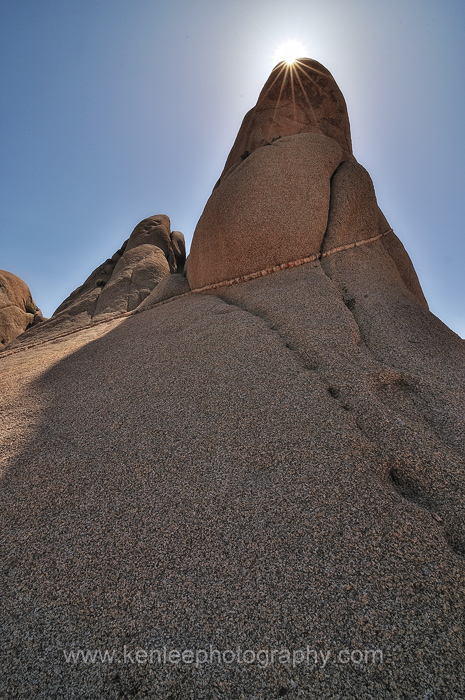 The color version of the photo from the previous page, Jumbo Rocks, Joshua Tree National Park in the high California desert, United States.
The color version of the photo from the previous page, Jumbo Rocks, Joshua Tree National Park in the high California desert, United States. |
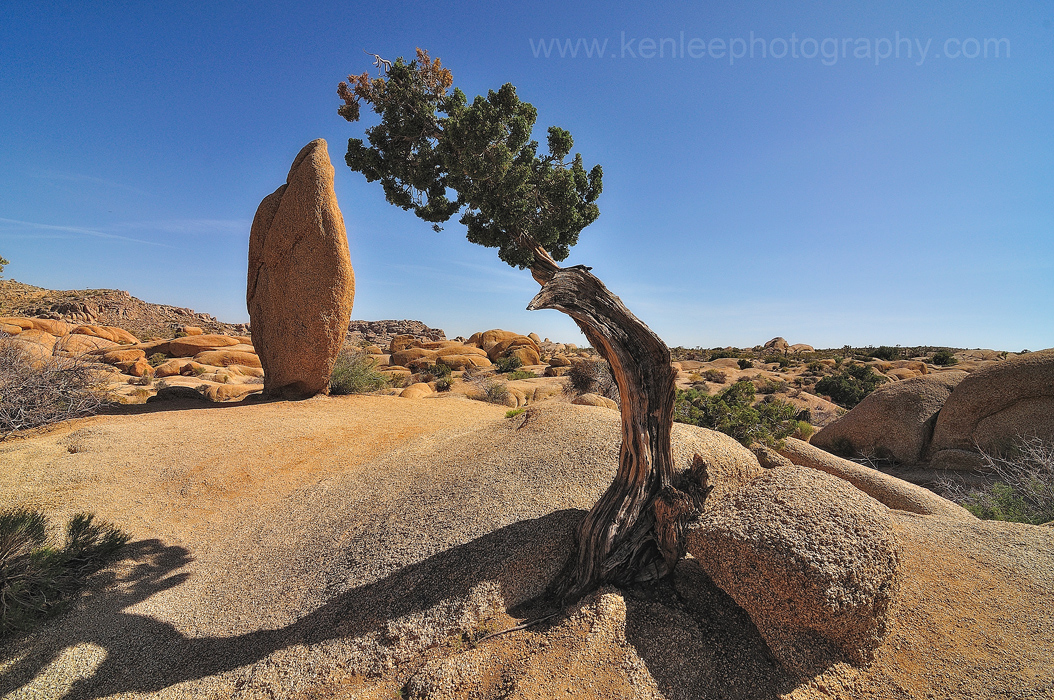 The color version of the photo from the previous page, Jumbo Rocks, Joshua Tree National Park in the high California desert, United States. Of all the versions that I ultimately decided to go black and white, this is the one I agonized over most. This looks about equally good in color as it does in black and white, but the black and white version had a little more emotion to me, so I went with it. Regardless, I love the rock in the background and the tree, and used a small aperture to make sure both were in focus.
The color version of the photo from the previous page, Jumbo Rocks, Joshua Tree National Park in the high California desert, United States. Of all the versions that I ultimately decided to go black and white, this is the one I agonized over most. This looks about equally good in color as it does in black and white, but the black and white version had a little more emotion to me, so I went with it. Regardless, I love the rock in the background and the tree, and used a small aperture to make sure both were in focus. |
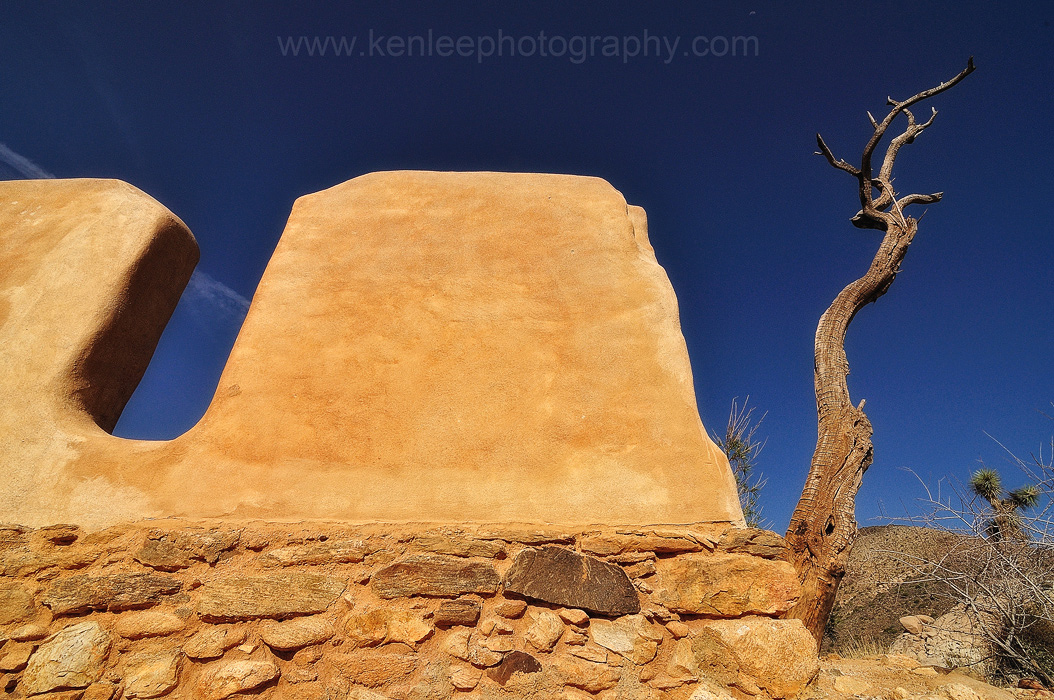 The color version of the photo from the previous page, Ryan Ranch, Joshua Tree National Park in the high California desert, United States. I went with the black and white version because I felt it was more haunting, but I like this and the other color photos as well.
The color version of the photo from the previous page, Ryan Ranch, Joshua Tree National Park in the high California desert, United States. I went with the black and white version because I felt it was more haunting, but I like this and the other color photos as well. |
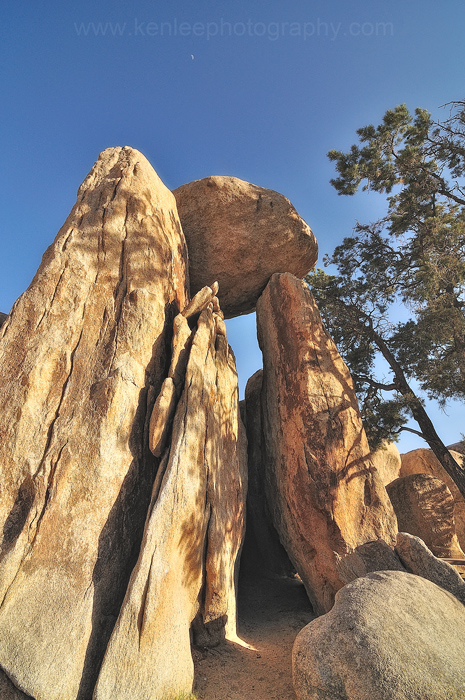 The color version of the photo from the previous page, Hidden Valley, Joshua Tree National Park in the high California desert, United States. I love the balancing rock at the top. The tiny little white sliver near the top of the photo is the moon. I felt the black and white version was more drama and potency. The color version of the photo from the previous page, Hidden Valley, Joshua Tree National Park in the high California desert, United States. I love the balancing rock at the top. The tiny little white sliver near the top of the photo is the moon. I felt the black and white version was more drama and potency. |
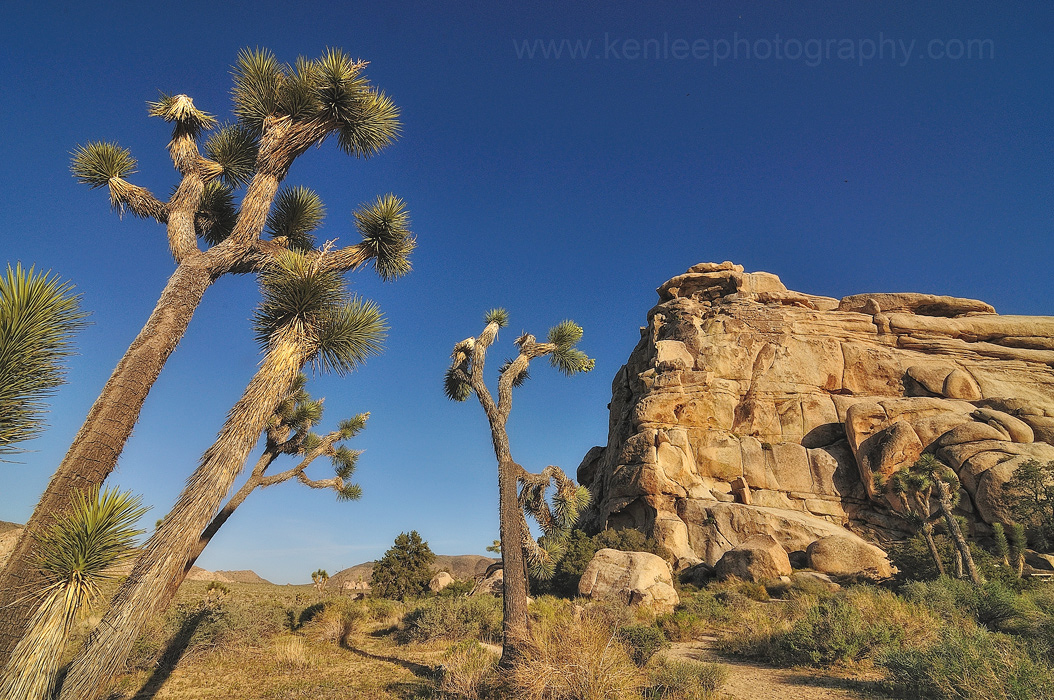 The color version of the photo from the previous page, Hidden Valley, Joshua Tree National Park in the high California desert, United States. I like this version, but also loved the starkness of the black and white version. This does show the buttery color of the setting sun, though. The color version of the photo from the previous page, Hidden Valley, Joshua Tree National Park in the high California desert, United States. I like this version, but also loved the starkness of the black and white version. This does show the buttery color of the setting sun, though. |
Why would anyone go through so much trouble to stack photos? Noise is the enemy of night photography. Keeping your shutter open for long periods of time is more likely to introduce noise. Stacking photos was originally developed as a technique in digital astrophotography to reduce noise, but of course, as more artistic photographers can use this technique too. The final photo, all together, is a 40-minute exposure. If I had left the camera open for 40 minutes, I would have gotten a lot of noise (grain), and the sensor would have heated up, coloring the stars. With my Nikon D90, I find that if I begin approaching 20 or 30 minutes, I begin getting more artifacts, and would have gotten more so since it was a relatively warm night. The red line on the left side is an airplane. In the final photo, I chose to leave it in because I thought it added some character. Since I had 80 photos, I could have easily taken it out. The foreground in a couple of other photos had the foreground illuminated. I liked that. In fact, that's why I had set up here. So I left them in, using Photoshop to blend the amount of illumination in to my liking. I like having that sort of artistic control, which is why I used Photoshop to stack the photos instead of one of the freeware versions that don't appear to offer as much control.
|
In this final photo, eighty photos were combined to combine this photo, a 40-minute exposure showing nature's celestial movements facing north. The faint almost horizontal red line on the left side is an airplane. The faint white dots on the far right hand side is a falling star. I initially took them out, then decided I'd leave them in and give the photo a little patina. :D The foreground was "light painted" by the ambient light from a couple of passing vehicles. I picked a location far enough from the road so cars wouldn't shine their headlights on my foreground too brightly. I ended up choosing a place that was up a small hill from the road which captured a small bit of ambient light from the headlights but wasn't harsh, allowing this ambient light to "light paint" the foreground in a nice, even manner. There was also a partial moon out, and I wanted to make sure that the camera wasn't facing near the moon, which can obscure the stars. I hope this was helpful. |
|
Ken's photos of Nobel Peace Prize Winner Aung
San Suu Kyi, as well as photos of Peru, Burma, India, Morocco, China, Thailand,
Ghana, Ecuador, and elsewhere, have appeared in many books, magazines,
websites, and galleries. Visit the
Ken Lee Photography Website. Some of Ken's select photos may be
purchased through his
Imagekind Store. |
Rock Stars: 24 Hours in Joshua Tree Following the Stars
Extra Page
Eleven Shadows Travel Page
Contact photographer/musician Ken Lee